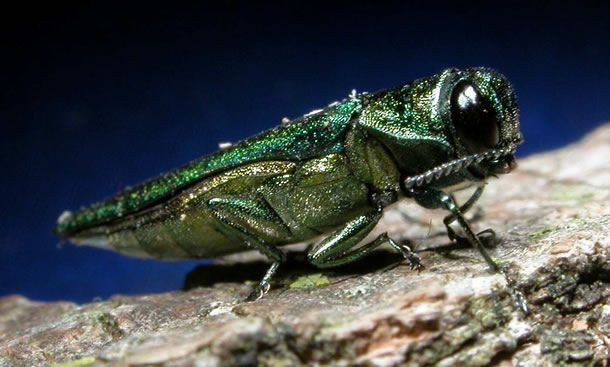Infection And Death Of Trees Linked To Rise In Cardiovascular And Respiratory Deaths; How Are They Connected?

We rely on trees for the air we breathe and the food we eat. Through the act of photosynthesis, trees take carbon dioxide out of the air and filter out pollution, giving us clean oxygen by using only sunlight and water. We know that forests are vital for the health and habitats of other animals on the planet, and act to protect forests as far away as Indonesia and the Amazon to maintain biodiversity. But a new report shows that humans may be linked to trees more directly than previously thought.
At First There Was An Invasion
In 2002, an invasive insect called the emerald ash borer immigrated to the United States from its native home in Asia and Eastern Russia. And then it killed. Close to 100 million trees died in the Midwestern and eastern United States in Iowa, New York, Virginia and surrounding states. No ash tree was safe in its wake, having all 22 American species susceptible to the insect's attack. It is believed that the insect came to the U.S. in solid wood packing material wither by boat or plane. Either way, it has not only affected the health of the ecosystem, but has also statistically increased the death rate in the U.S.
And Then People Became Ill
A recent study from the U.S. Forest Services accumulated raw data from 1,296 counties affected by the invasive insect and found some interesting health implications for people. In the 15 states affected, there was an increase of 15,080 people dying from cardiovascular disease and an added 6,113 people dying from lower respiratory disease compared to areas where the bug had yet to infest.
NPR interviewed the lead reseacher on the project who believes that the loss of the symbiotic relationship, because of the mass casualties of trees, definitely affects human health. "Well my basic hypothesis was that trees improve people's health. And if that's true, then killing 100 million of them in 10 years should have an effect. So if we take away these 100 million trees, does the health of humans suffer? We found that it does." said Dr. Geoffrey Donovan, Ph.D.
The researchers also found that counties that had the infestation for longer periods of time had an increase of adverse health events. Donovan mentioned that socio-economic status had no bearing on the results, "Places with high education, with low education, with great income, with low income, with different racial makeups."
Donovan continued saying that trees and ecological health should be a major focus of public health programs. So while we may think of trees as simply beautiful foliage or protective shade, they may be doing far more for human health. More research needs to be performed to determine how the death of ash trees is adversly affecting human health and killing tens of thousands of Americans prematurely.
Source: Donovan G, Butry D, Michael Y, et al. The Relationship Between Trees and Human Health: Evidence from the Spread of the Emerald Ash Borer. American Journal of Preventive Medicine. 2013.



























